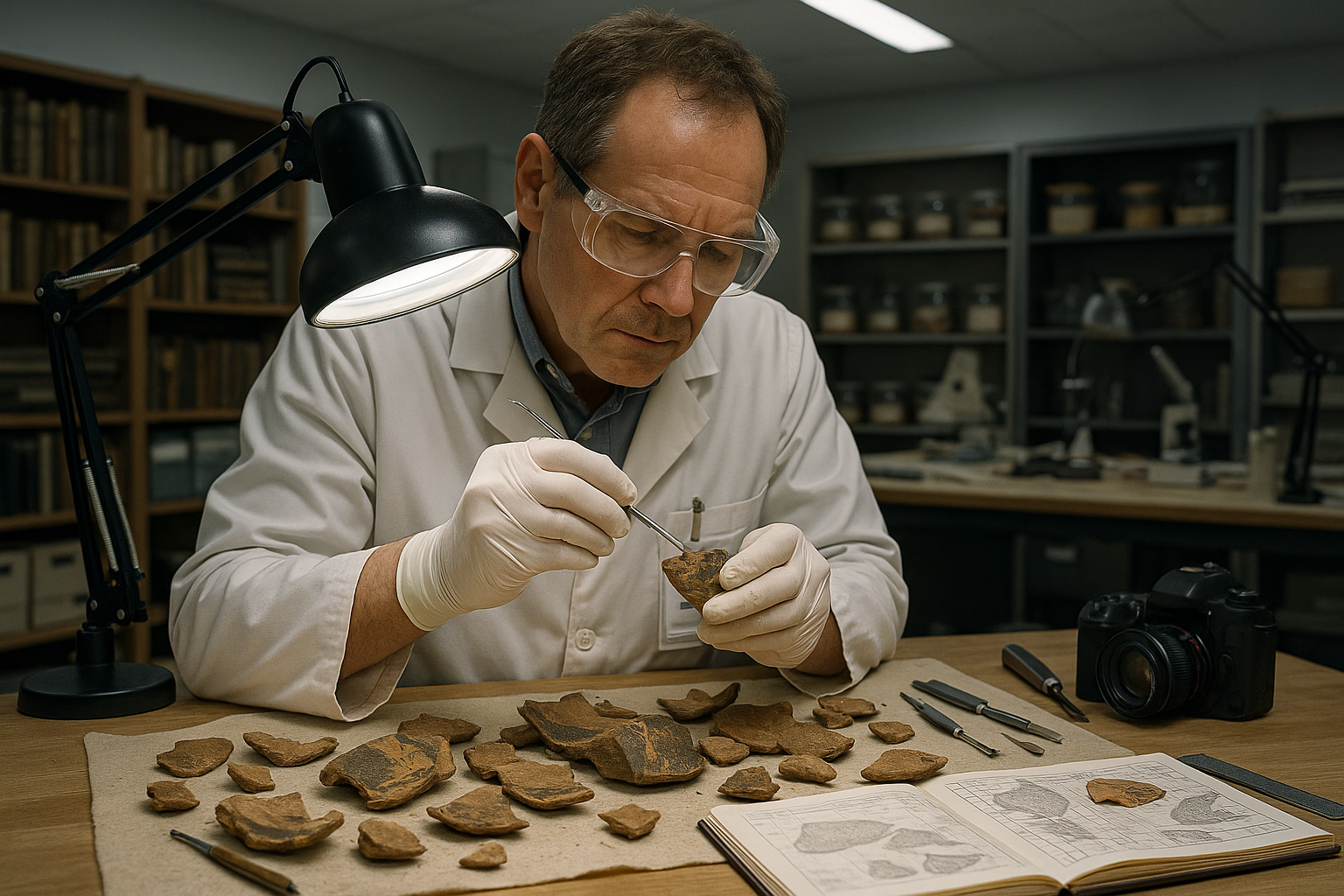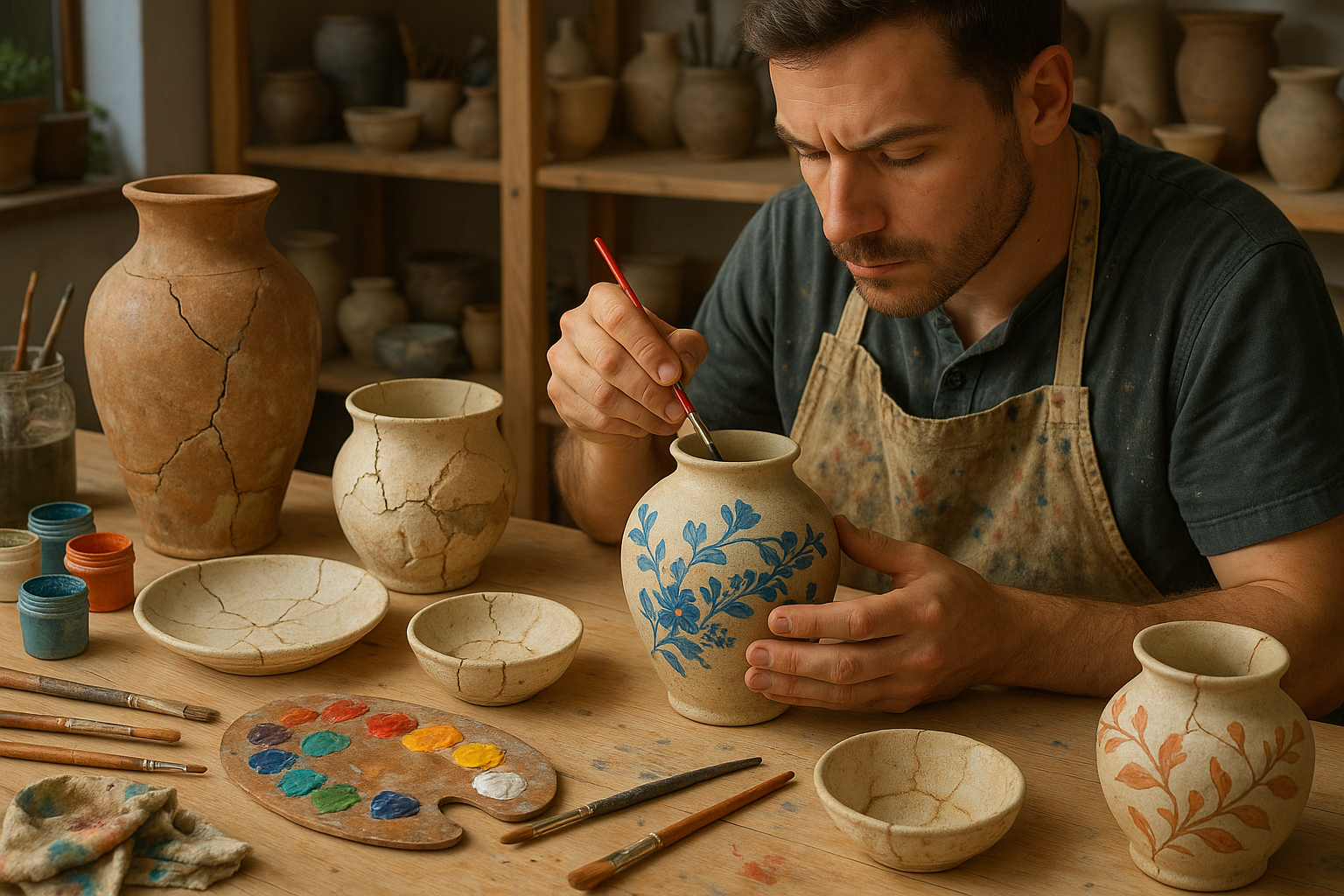Ancient
In a world where technology constantly propels us forward, there’s an undeniable allure to looking back, especially when it comes to piecing together the fragments of ancient history. The mysterious allure of restoring ancient shards isn’t just a pursuit for archaeologists or historians; it’s a fascinating endeavor that bridges the past with the present, offering insights into the lives, cultures, and technologies of civilizations long gone. 🏺✨
Picture this: a team of experts huddled around a table, each holding pieces of pottery or glassware, meticulously aligning fragments that once formed something whole and meaningful. These ancient shards are like time capsules, each one telling a part of a story that’s been waiting centuries to be uncovered. The process of restoration is much more than a simple assembly of broken parts; it’s an intricate dance of science, art, and historical research. But what makes this endeavor so complex and captivating?
To begin with, the restoration of ancient artifacts is a journey that demands a confluence of skills and disciplines. Imagine the meticulous work of identifying the origins of a shard. Is it Roman, Greek, or perhaps from a less well-documented civilization? The detective work involved requires not just a keen eye but also a deep understanding of historical contexts and materials. 🧐🔍
Moreover, each shard holds secrets about the material science of its time. By analyzing the composition of pottery, glass, or metal, experts can unravel the technologies and resources that were available to ancient peoples. What methods did they use to create these objects? How did their techniques evolve over time? These questions open windows into the technological advancements and trade networks of bygone eras, revealing a complex web of human ingenuity and interaction.
But the journey doesn’t end with identification and material analysis. Restoring these artifacts to something resembling their original form involves an artistic touch that balances restoration with conservation. It’s a delicate process; one wrong move and a shard can lose its integrity. This requires not only technical skill but also a philosophical approach to restoration. How much should we restore? Is it better to leave some parts incomplete to preserve authenticity, or should we aim for a full reconstruction? These are questions that conservationists must grapple with, as they weigh the historical significance against aesthetic completeness. 🎨🖌️
Furthermore, the restoration of ancient shards isn’t a solitary pursuit. It often involves collaboration among international teams of researchers, conservationists, and even local communities who share a vested interest in preserving their heritage. This collaboration extends beyond geographical boundaries, leading to shared knowledge and resources that make such projects feasible. In this way, the restoration of ancient shards becomes a global effort, underscoring our collective responsibility to safeguard history for future generations.
In this article, we’ll delve deeper into each aspect of this fascinating process. We’ll explore the scientific methodologies that experts use to analyze materials, the historical contexts that help identify origins, and the conservation techniques that breathe new life into these ancient fragments. We’ll also discuss the ethical considerations that guide restorers in their work and highlight some of the most remarkable restoration projects that have captured the imagination of the world. 🌍✨
As we navigate the complexities of restoring ancient shards, we’ll uncover the stories they tell and the secrets they hold, inviting you to embark on a journey that transcends time and space. Whether you’re an avid history enthusiast, a budding archaeologist, or simply someone curious about the past, this exploration promises to enrich your understanding of the intricate tapestry of human history. So, let’s dive into the world of ancient shards and discover the myriad ways in which the past continues to shape our present and inspire our future. 🚀📜

Conclusion
As we conclude our exploration of ancient shard restoration, it’s clear that piecing together the fragments of the past is both a scientific and artistic pursuit. Each shard tells a story — of craftsmanship, culture, and the passage of time — and through careful restoration, these once-broken relics regain their voice in history.
The true beauty of restoring ancient shards lies in the union of precision and reverence. 🌿💡 Archaeologists, conservators, and artisans collaborate to preserve authenticity while reviving form, ensuring that each reconstructed piece remains faithful to its origins. Ultimately, restoring ancient shards is more than a technical process — it’s an act of remembrance, reconnecting humanity with its creative lineage and transforming fragments of the past into enduring symbols of resilience and continuity.




